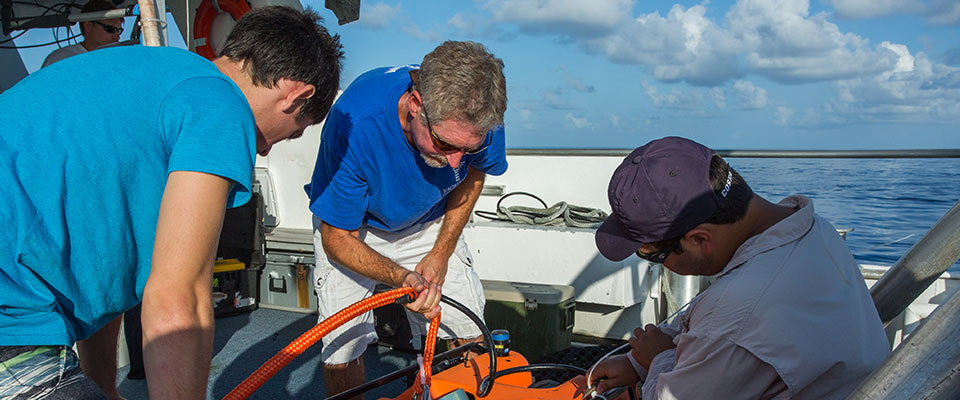
School of Earth, Environmental, and Marine Sciences Faculty Publications and Presentations
Document Type
Article
Publication Date
2005
Abstract
Species richness is one of the best indicators of biodiversity. However, there are few investigations on concordance of diversity patterns and environmental settings for marine regions. The objectives of this study were to correlate species richness of shallow water (< 200 m deep) sea stars with key oceanographic factors in the Gulf of California, México, and to predict species richness of Asteroidea using multiple regressions. In these analyses the Gulf was divided into nine sections of one degree in latitude (from 23 - 31° N), at each section we recorded: continental shelf area (at 100 and 200 m depth), temperature mean and range at three depth levels (0, 60 and 120 m), thermocline depth, surface nutrient concentrations (nitrates, phosphates and silicates), surface photosynthetic pigment concentration, and integrated productivity. Sea star species richness at each latitudinal section was estimated from literature data, new collections and museum records. Species were assigned to one of the following feeding guilds: predators of small mobile invertebrates (I), detritivores (D), predators of colonial organisms (C), generalist carnivores (G), and planktivores (P). There are 47 shallow water asteroid species in the Gulf of California (16 I, 15 D, eight C, six G, one P and one not assigned). Total species richness and guild species richness showed strong latitudinal attenuation patterns and were higher in the southernmost Gulf, an area characterized by a narrow shelf, high temperature, and low nutrient concentrations. Species diversity for each guild was correlated to a set of oceanographic parameters: temperature, nitrate concentration, and integrated productivity were linked to richness in must cases. We detected that nutrients and surface pigments always presented negative relationships with species richness, indicating that productive environments limit asteroid diversity in the study area. Finally, the postulated regression models to estimate species richness from oceanographic data were significant and highly precise. We conclude that species richness of Asteroidea in the Gulf of California is related to oceanographic conditions and can be estimated from regional oceanographic information.
Recommended Citation
Cintra-Buenrostro CE, Reyes-Bonilla H, Herrero-Pérezrul MD. Oceanographic conditions and diversity of sea stars (Echinodermata: Asteroidea) in the Gulf of California, México. Rev Biol Trop. 2005 Dec;53 Suppl 3:245-61.
First Page
245
Last Page
261
Publication Title
Rev. Biol. Trop.

